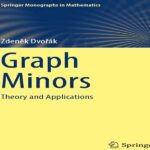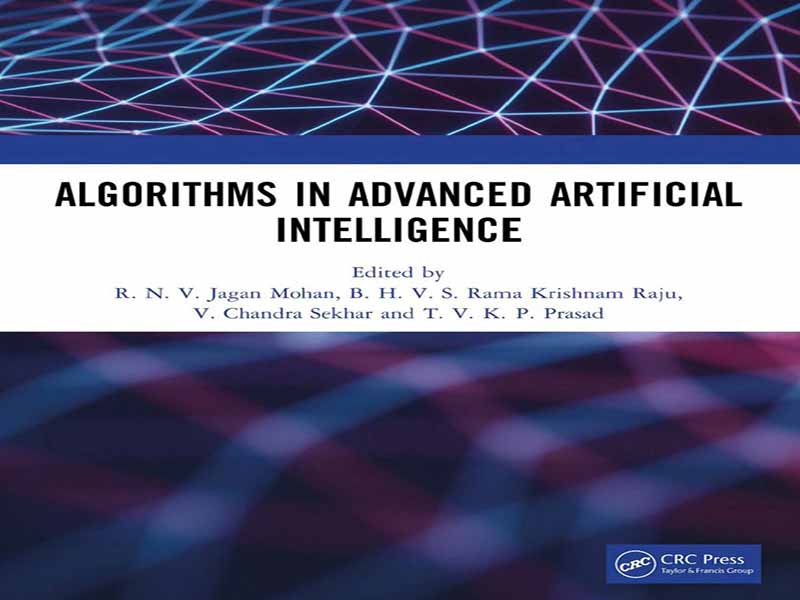- عنوان کتاب: Algorithms in Advanced Artificial Intelligence
- نویسنده: R. N. V. Jagan Mohan
- حوزه: الگوریتمهای هوش مصنوعی
- سال انتشار: 2025
- تعداد صفحه: 786
- زبان اصلی: انگلیسی
- نوع فایل: pdf
- حجم فایل: 25.4 مگابایت
تأثیر هوش مصنوعی بر تصمیمگیری در حال افزایش است، اما درک آن محدود است. برای درک اثرات هوش مصنوعی و بهبود طراحی انسانمحور، به قانونگذاری نیاز است. هوش مصنوعی مولد (GenAI) از الگوهای پایگاه داده بزرگ برای تولید نمونههای داده جدید استفاده میکند، در حالی که هوش مصنوعی قابل توضیح (XAI) به کاربران انسانی اجازه میدهد تا نتایج الگوریتمهای یادگیری ماشین را درک و به آنها اعتماد کنند و بستری را برای شرکتکنندگان در کنفرانس فراهم میکند. کنفرانس ICAAAI-2024 بر شبکههای مولد تخاصمی (GAN)، رمزگذارهای خودکار متغیر (VAE) و مبدلها برای وظایف پردازش زبان طبیعی تمرکز خواهد کرد. مدلهای زبان بزرگ (LLM) برای تولید زبان، طبقهبندی و موارد دیگر استفاده میشوند. هر دو زمینه برای پیشرفت هوش مصنوعی بسیار مهم هستند و به چالشهای موجود در زمینههای خلاق و صنایع تحت نظارت میپردازند. هوش مصنوعی مولد با قادر ساختن ماشینها به مشارکت در فرآیندهای خلاقانه، در حال متحول کردن دانشگاه و صنعت 6.0 است. هوش مصنوعی قابل توضیح برای اعتماد و پاسخگویی ضروری است و نیازمند رویکردهای میانرشتهای در مدلسازی ریاضی و هوش مصنوعی آماری است. تکنیکهایی مانند SHAP، LIME و ALE برای ارائه توضیحات جهانی و محلی از قوانین عملیاتی یک مدل استفاده میشوند. مدلهای هوش مصنوعی آماری مانند رگرسیون خطی، رگرسیون لجستیک، درختهای تصمیمگیری، SVMها، Naive Bayes، KNN و شبکههای عصبی برای وظایف مختلف استفاده میشوند. مدلهای هوش مصنوعی با الگوریتمهای قابل توضیح مانند LIME، SHAP و SBRL سادهتر میشوند که همچنین تجربه کاربر را بهبود میبخشند و خطاها را کاهش میدهند. با رایجتر شدن هوش مصنوعی در زندگی روزمره، درخواستها برای شفافیت عملیاتی افزایش یافته است. با این حال، پیامدهای اجتماعی ضعیف ناشی از نتیجهگیریهای هوش مصنوعی میتواند شامل تعصب علیه جوامع معلول و برداشتهای نادرست باشد. پیروی از دستورالعملهای فناوری ارتباطات و اطلاعات (ICT)، که بر بهبود روشهای تولید، مدیریت و تبادل دادهها توسط زیرساختها و ابزارهایی برای تکنیکهای پیشرفته ICAAAI-2024 تمرکز دارد. الگوریتمها در هوش مصنوعی پیشرفته مجموعهای از مقالات در مورد مسائل نوظهور، چالشها و روشهای جدید در هوش مصنوعی، یادگیری ماشین، یادگیری عمیق، محاسبات ابری، یادگیری فدرال، اینترنت اشیا و فناوری بلاکچین است. این کتاب به توجه روزافزون به فناوریهای پیشرفته به دلیل توانایی آنها در ارائه “راه حلهای ماوراءالطبیعه” برای مشکلات مرتبط با چارچوبهای هوش مصنوعی کلاسیک میپردازد. هوش مصنوعی در زیرشاخههای مختلفی از جمله یادگیری، ادراک و تصمیمگیریهای مالی مورد استفاده قرار میگیرد. این فناوری از چهار استراتژی استفاده میکند: تفکر انسانی، تفکر عقلانی، عمل انسانی و عمل عقلانی. نویسندگان به موضوعات مختلفی در فناوری اطلاعات و ارتباطات، از جمله هوش مصنوعی، یادگیری ماشین، یادگیری عمیق، علم داده، تجزیه و تحلیل کلان داده، بینایی، اینترنت اشیا، جنبههای امنیتی و حریم خصوصی در هوش مصنوعی و کاربردهای یکپارچه بلاکچین و دوقلوی دیجیتال در هوش مصنوعی میپردازند.
Artificial Intelligence’s impact on decision-making is growing, but understanding is limited. Legislation is needed to understand AI’s effects and improve human-centric design. Generative Artificial Intelligence (GenAI) uses large database patterns to generate new data instances, while Explainable Artificial Intelligence (XAI) allows human users to understand and trust the results of machine learning algorithms, providing a platform for conference attendees. The ICAAAI-2024 conference will focus on generative adversarial networks (GANs), variational autoencoders (VAEs), and transformers for natural language processing tasks. Large language models (LLMs) are used for language generation, classification, and more. Both fields are crucial for AI advancement, addressing challenges in creative fields and regulated industries. Generative AI is revolutionizing academia and industry 6.0 by enabling machines to participate in creative processes. Explainable AI is essential for trust and accountability, requiring interdisciplinary approaches in mathematical modeling and statistical AI. Techniques like SHAP, LIME, and ALE are used to provide global and local explanations of a model’s operating rules. Statistical AI models like linear regression, logistic regression, decision trees, SVMs, Naive Bayes, KNN, and neural networks are used for various tasks. AI models are made simpler with explainable algorithms such as LIME, SHAP, and SBRL, which also improve user experience and cut down on errors. There’s been an increase in calls for operational openness as AI becomes more commonplace in daily life. However, poor societal outcomes from AI conclusions can include prejudice against disabled communities and erroneous apprehensions. To follow the guidelines of Information Communication Technology (ICT), which focuses on improving data generation, handling, and exchange methods by infrastructure and tools for Advanced Techniques of ICAAAI-2024. Algorithms in Advanced Artificial Intelligence is a collection of papers on emerging issues, challenges, and new methods in Artificial Intelligence, Machine Learning, Deep Learning, Cloud Computing, Federated Learning, Internet of Things, and Blockchain technology. The book addresses the growing attention to advanced technologies due to their ability to provide “paranormal solutions” to problems associated with classical Artificial Intelligence frameworks. AI is used in various subfields, including learning, perception, and financial decisions. It uses four strategies: Thinking Humanly, Thinking Rationally, Acting Humanly, and Acting Rationally. The authors address various issues in ICT, including Artificial Intelligence, Machine Learning, Deep Learning, Data Science, Big Data Analytics, Vision, Internet of Things, Security and Privacy aspects in AI, and Blockchain and Digital Twin Integrated Applications in AI.
این کتاب را میتوانید از لینک زیر بصورت رایگان دانلود کنید:





































نظرات کاربران